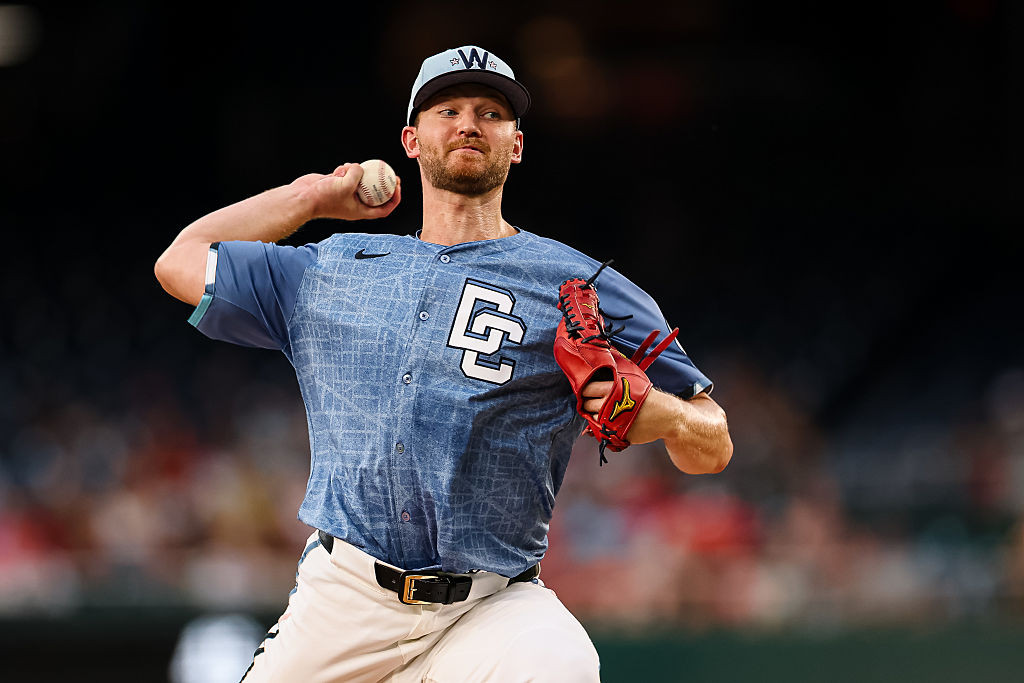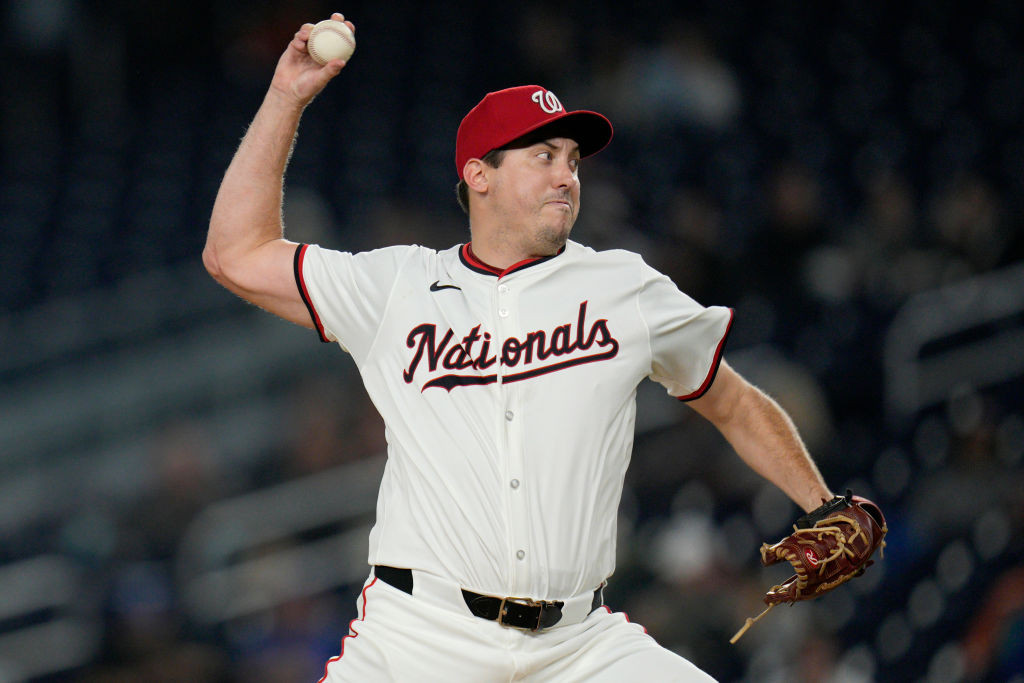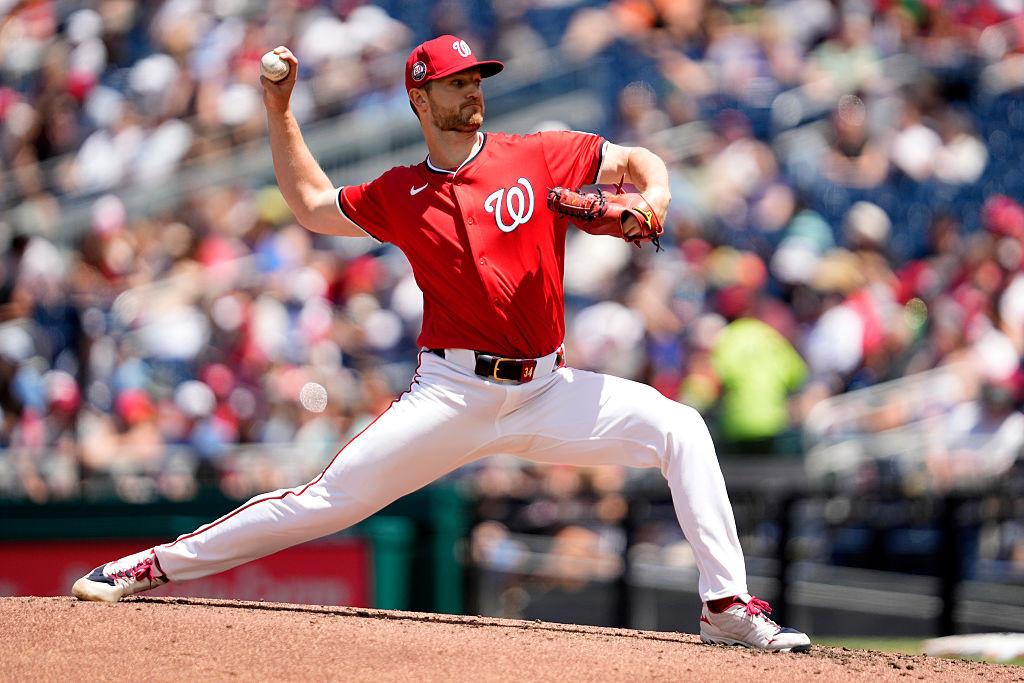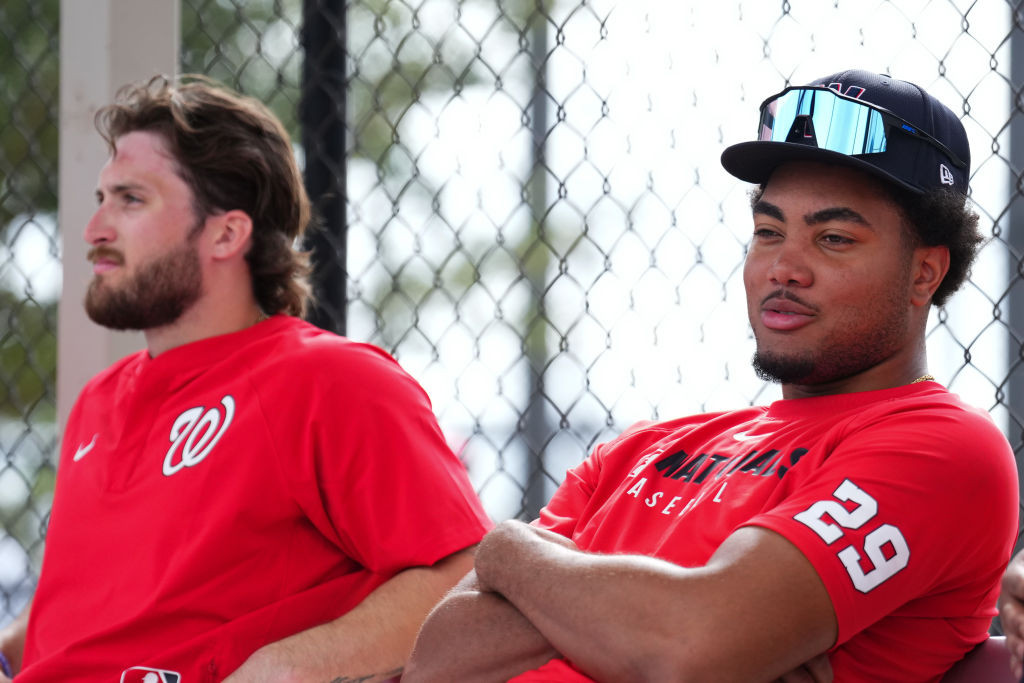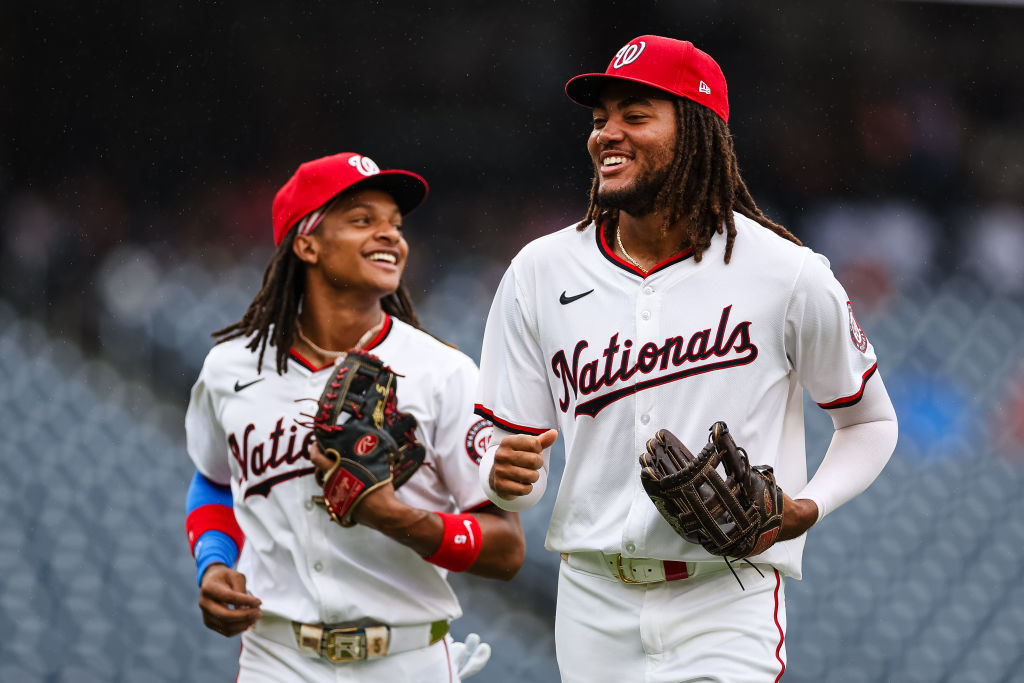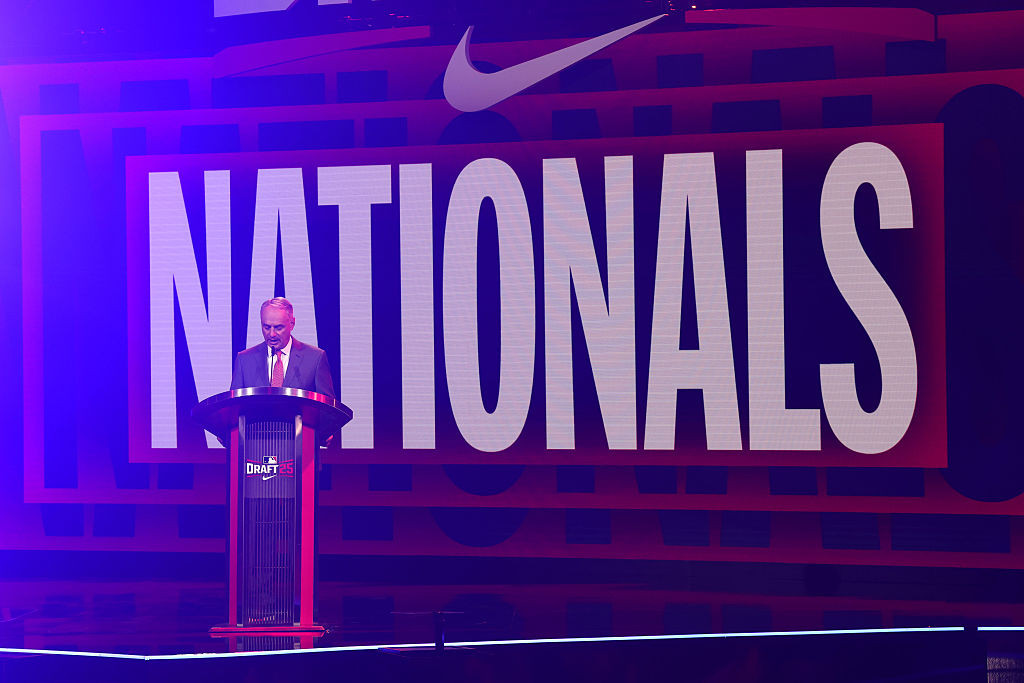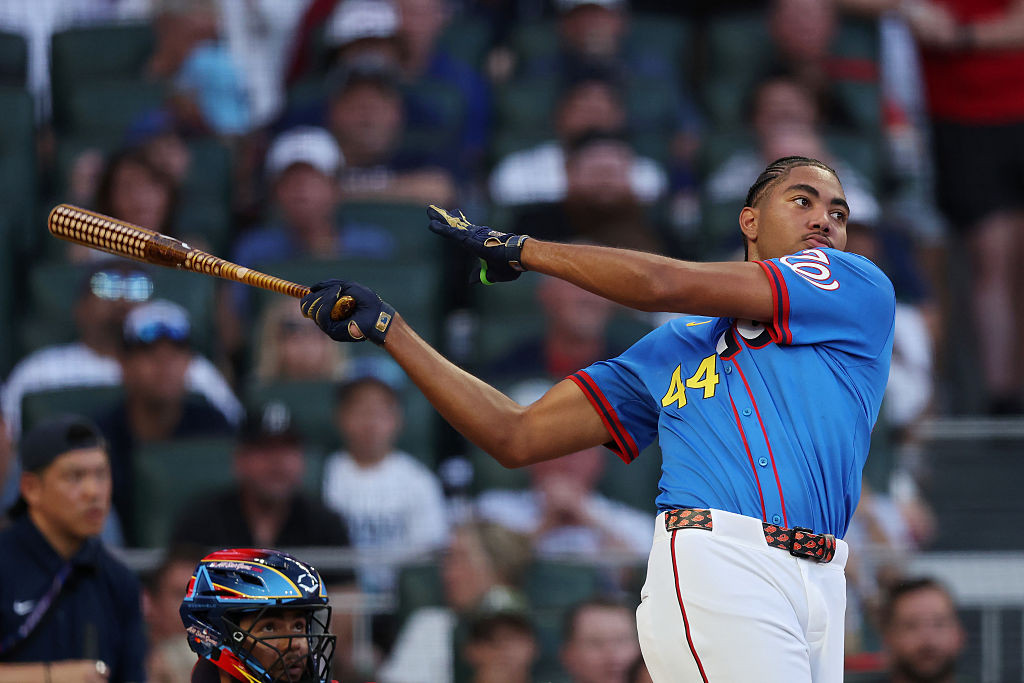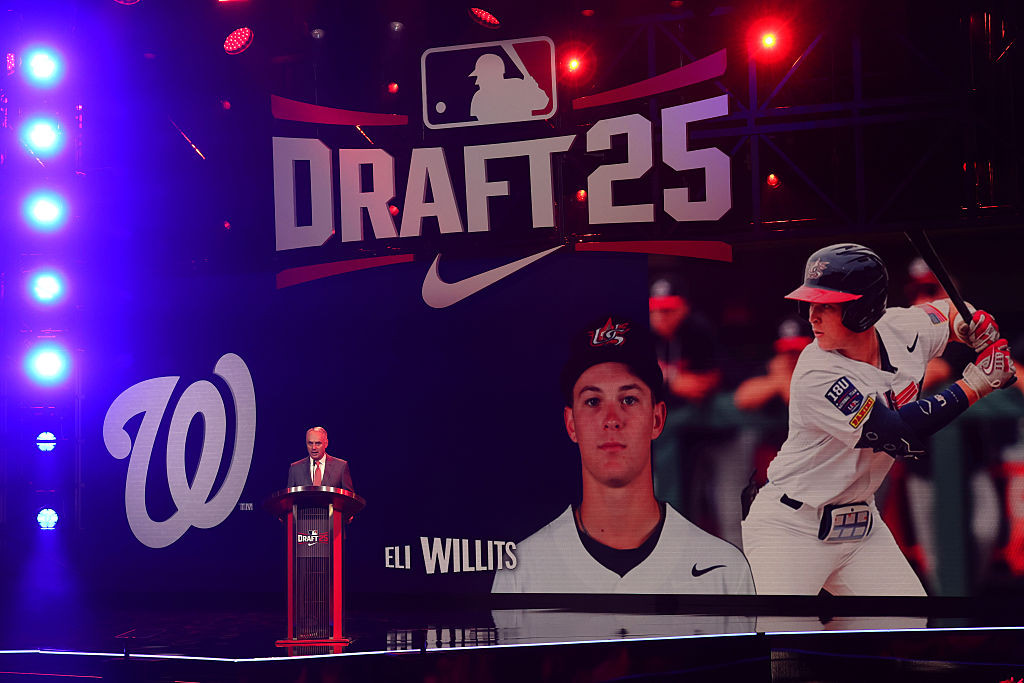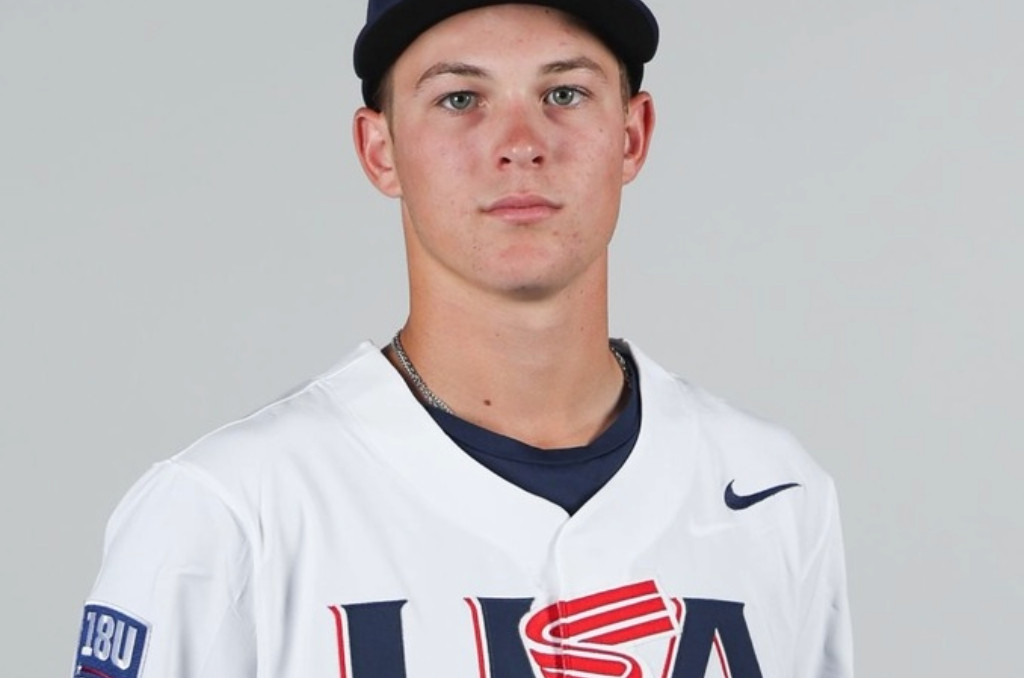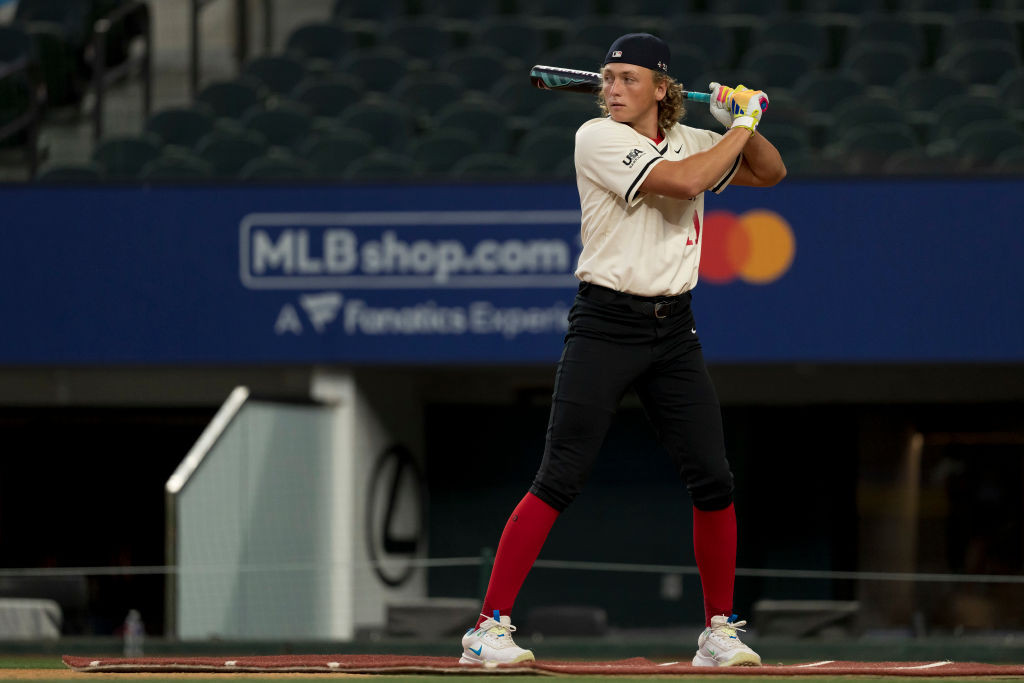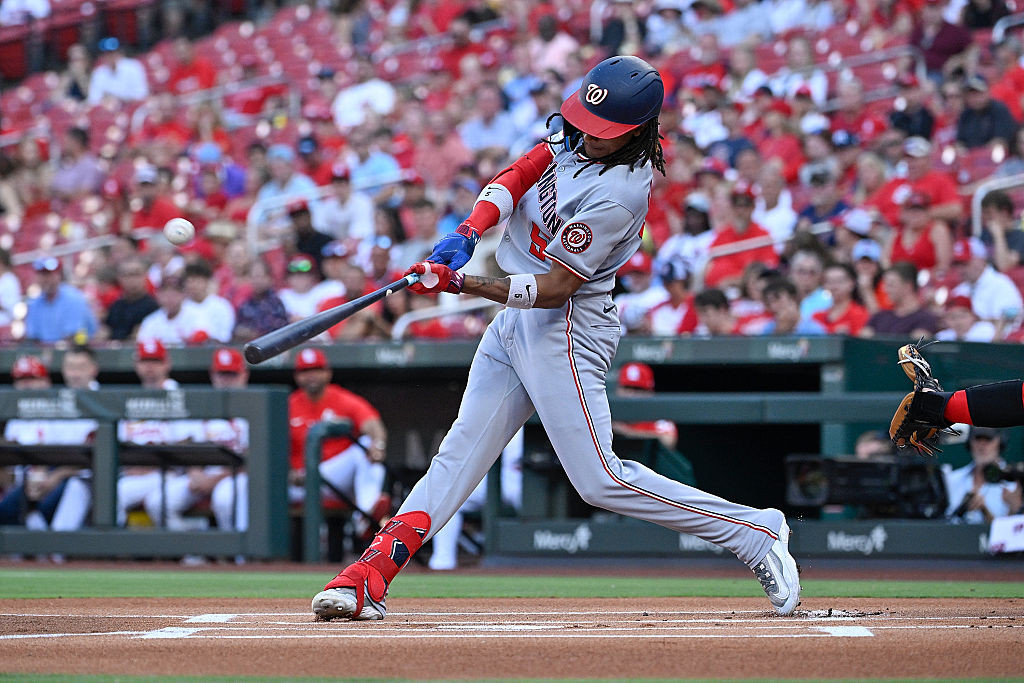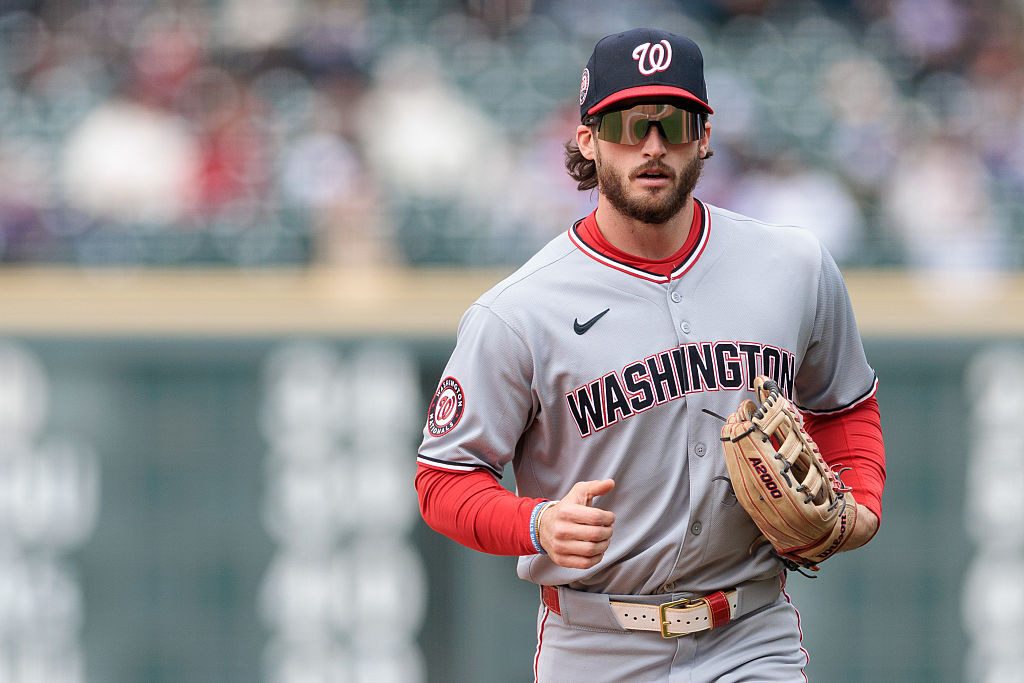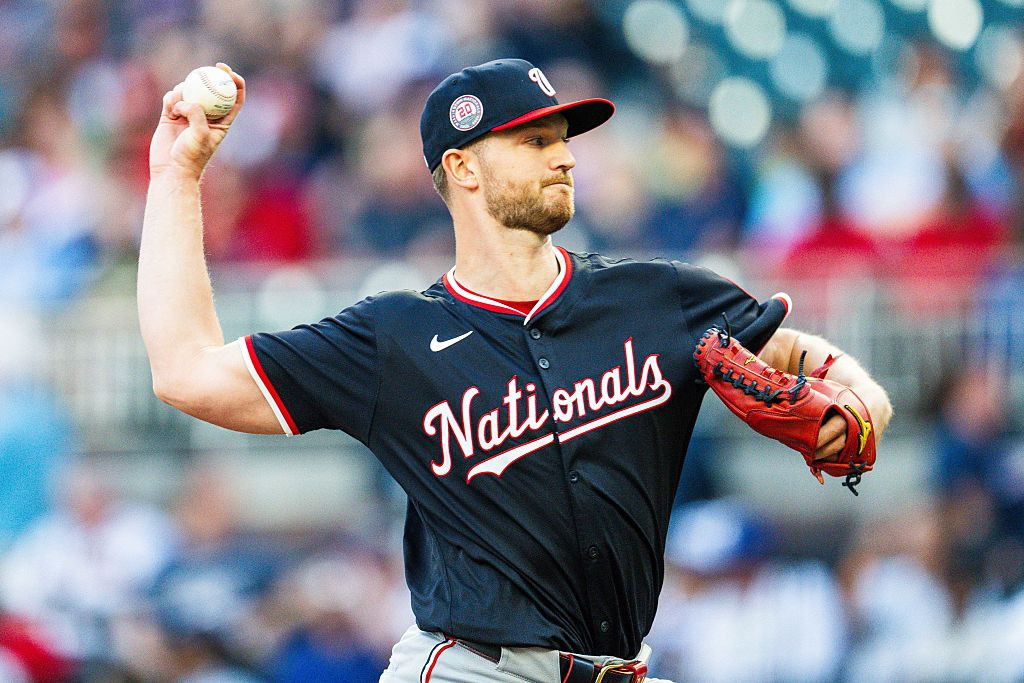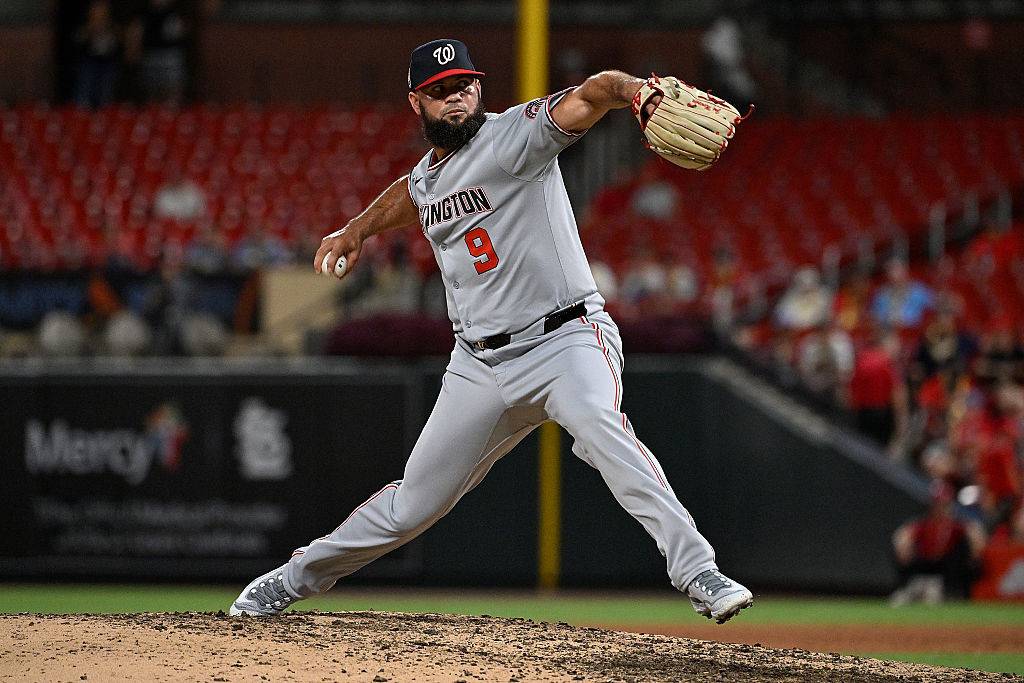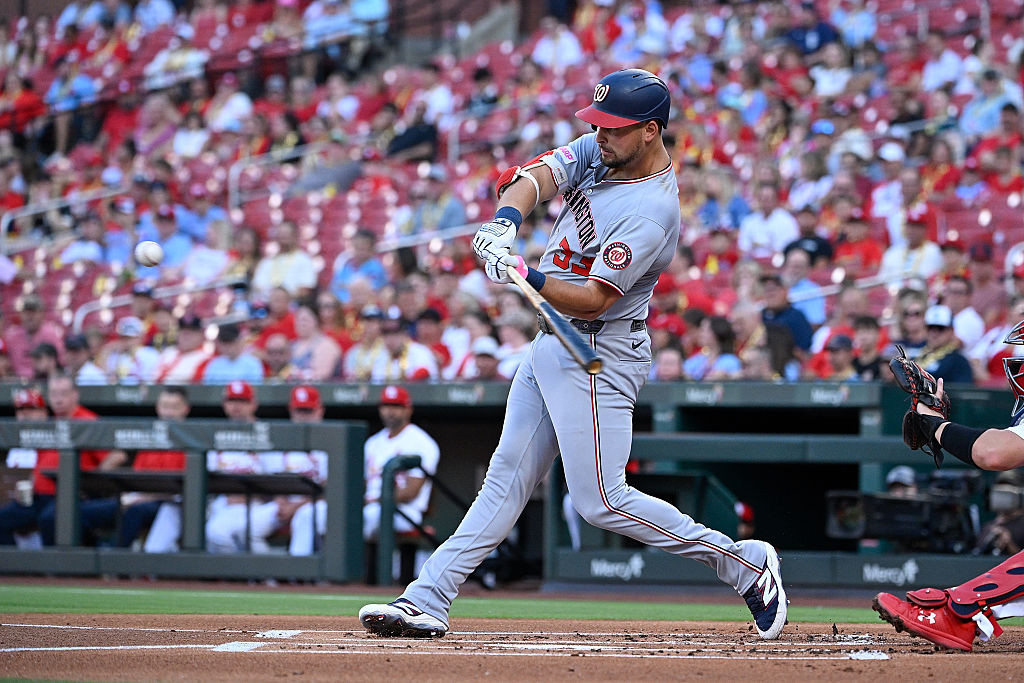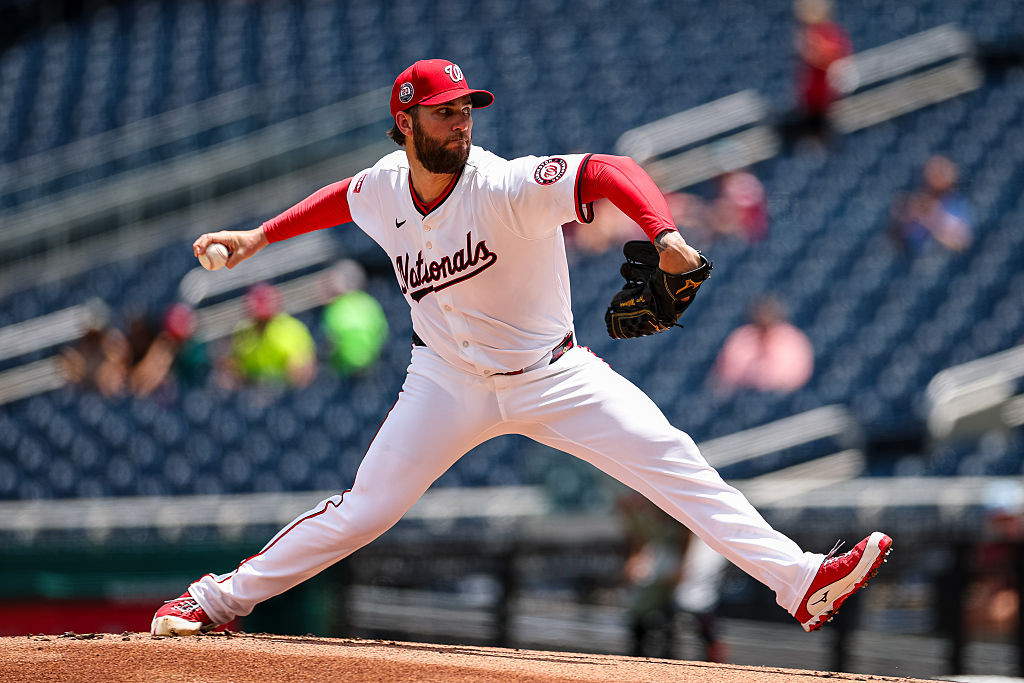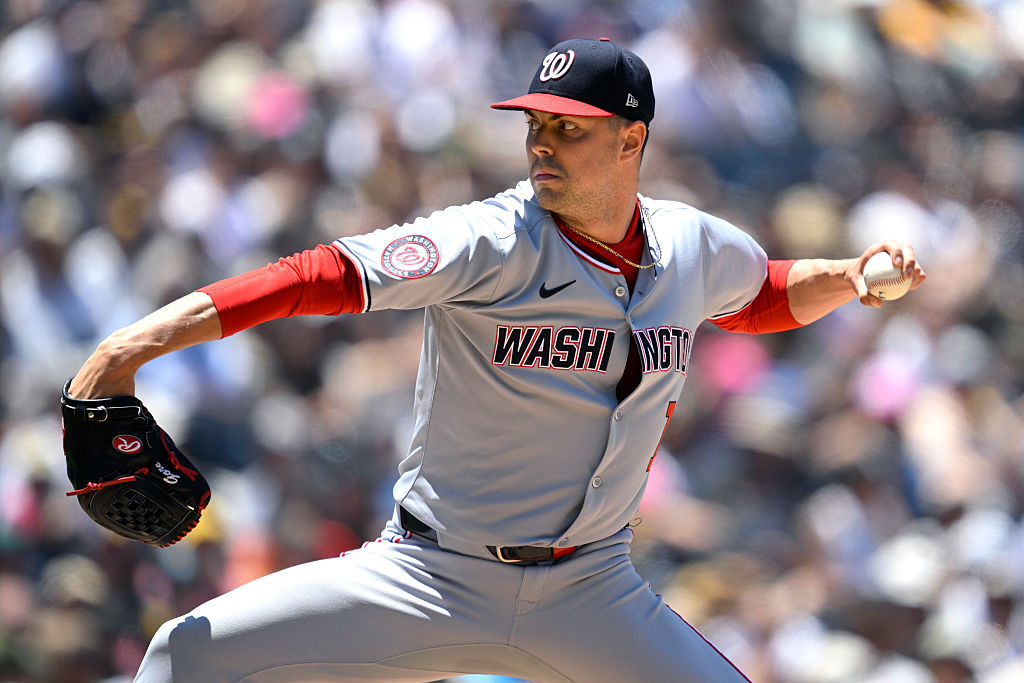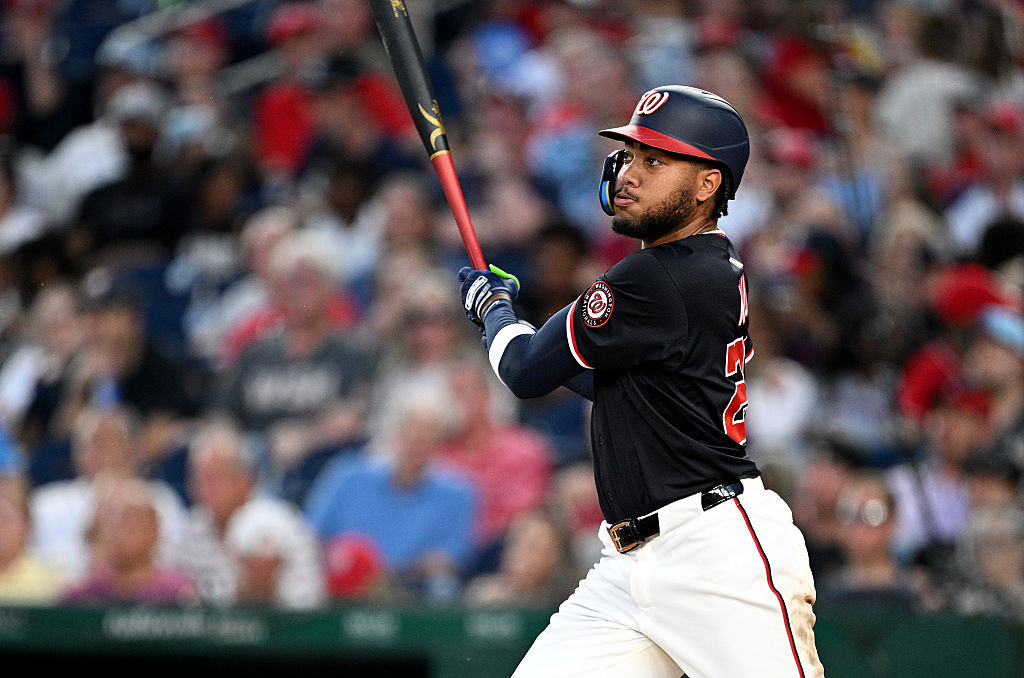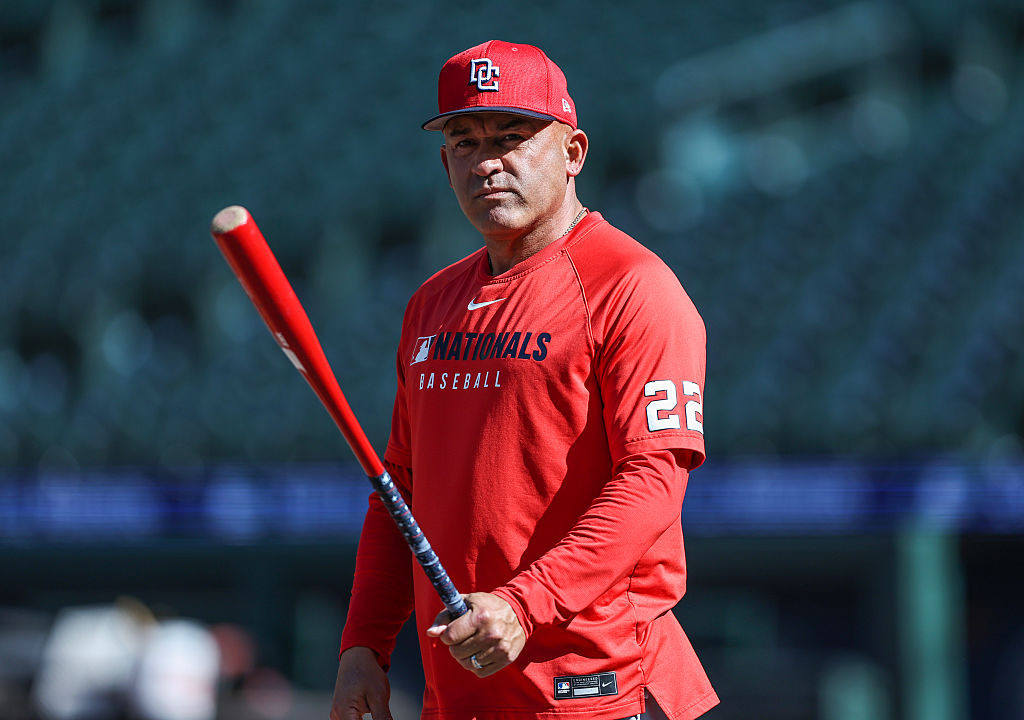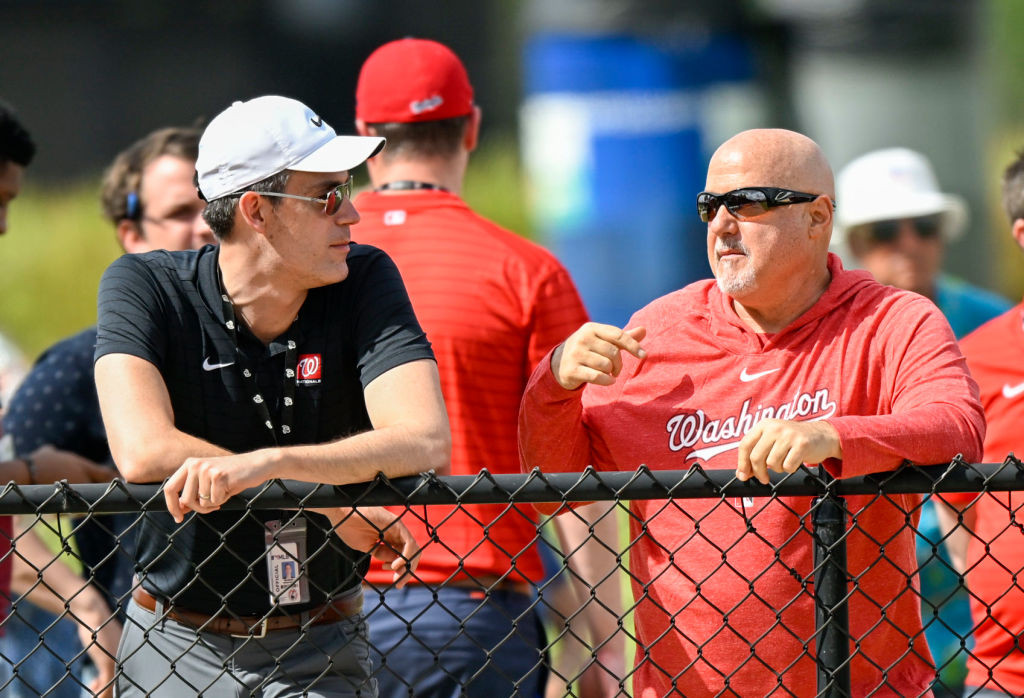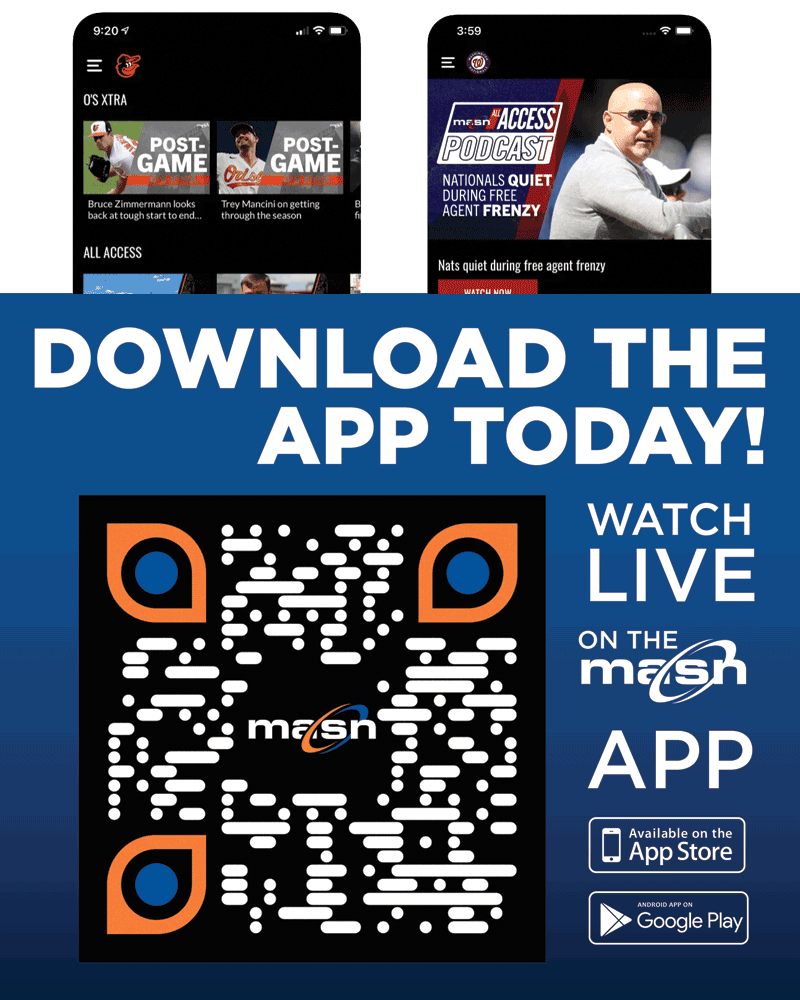The idea is to play a more fundamental brand of baseball the rest of the season, Miguel Cairo explained this afternoon. The Nationals’ interim manager then watched as the Padres showed them the proper way to do that while watching his own team come up woefully short on multiple occasions.
Despite getting a jolt from CJ Abrams’ game-tying homer in the bottom of the eighth, the Nats still lost 7-2 when San Diego scored five runs off Kyle Finnegan in the top of the ninth, an inning that featured a successful hit-and-run, the game’s second successful safety squeeze, good baserunning and then a grand slam for the final dagger.
The Nationals? They ran themselves into three more outs (Josh Bell accounting for two of them at critical moments in the game), stumbled in the field and watched another winnable game not only slip from their fingers but turn into a rout.
In short, the second half of a season gone awry opened in much the same manner the first half closed.
"I said it before: That's something we need to keep working on getting better," said Cairo, whose team is now 1-6 since he replaced Davey Martinez. "We're going to keep working on doing the little things better than the other team. There's still 2 1/2 months to go, and we've got to keep our heads up. I'm going to stay aggressive. If you're not aggressive, you're not trying."
For four months, Derek Law tried to get his arm ready to pitch in the major leagues, hoping the setbacks he experienced along the way could finally be overcome. Until the veteran Nationals reliever was told last week he has a partial tear of the flexor tendon in his right elbow, at which point hope turned to acceptance.
Law will undergo surgery soon to repair the tear, a procedure that will prevent him from pitching this season and likely sideline him until early-to-mid 2026. It’s a tough pill to swallow for the 34-year-old, who wanted to believe all along he’d be able to contribute to the Nats in 2025 but has now resigned himself to the fact he can’t.
“It was already hard enough to miss Opening Day this year. And then you hear that,” he said. “I needed every bit of five days to figure out in my head what the heck’s going on, the downtime I’m going to miss.”
The workhorse of the Nationals' bullpen, Law made 75 appearances and pitched 90 innings last season, the highest total by any of the team’s relievers since Tyler Clippard in 2010. He did so while missing two weeks in late-August with a flexor strain, an injury he rebounded from to close out the season with no real issues.
Law never could get his arm right this season, though. After a delayed build-up in spring training, he began experiencing elbow soreness, so he opened the year on the injured list. That turned into a much longer process than initially envisioned, with Law eventually making four appearances in minor league rehab games over the last month but unable to emerge from those sessions without a return of the elbow pain.
And we’re back. After a much-needed, four-day break, the Nationals return for the second half of the season, surely hoping it will go much better than the first half did. The “second half,” of course, is a misnomer. They’ve already played 96 games, so there are only 66 still to be played.
It begins tonight with the opener of a three-game series against the Padres, who are sending someone to the mound the Nats may not be thrilled to see again: Dylan Cease. Almost exactly one year ago, the right-hander tossed a no-hitter here at Nationals Park. Cease hasn’t been nearly as good this season; he enters 3-9 with a 4.88 ERA, but he’s still striking out more than 11 batters per nine innings.
The All-Star break gave Miguel Cairo and Jim Hickey a chance to reorganize their rotation. So with MacKenzie Gore having thrown his scoreless inning Tuesday in Atlanta, he’ll now be pushed back to Sunday. And with Jake Irvin having thrown Sunday’s first half finale in Milwaukee, he’ll get extra rest. So it’s Michael Soroka out of the chute tonight, with Mitchell Parker set for Saturday night’s game.
SAN DIEGO PADRES at WASHINGTON NATIONALS
Where: Nationals Park
Gametime: 6:45 p.m. EDT
TV: MASN, MLB.tv
Radio: 106.7 FM, 87.7 FM (Spanish), MLB.com
Weather: Mostly cloudy, 80 degrees, wind 66 mph out to left field
PADRES
RF Fernando Tatis Jr.
1B Luis Arraez
3B Manny Machado
LF Gavin Sheets
CF Jackson Merrill
SS Xander Bogaerts
2B Jake Cronenworth
DH Trenton Brooks
C Elias Díaz
The All-Star break is over. The Nationals – along with 29 other major league teams – return to action tonight, and the second half of the 2025 season gets underway.
It’s a second half that doesn’t hold anything close to the same promise it did a few months ago, when it looked like the Nats might at least threaten the .500 mark, maybe even make a surprise cameo appearance in the National League wild card race. Alas, that’s not going to happen now. To finish 81-81, they need to go a ridiculous 43-23 the rest of the way. (That would be the equivalent of a 105-win pace over an entire season. So, yeah, it’s not happening.)
But that doesn’t mean the rest of the season is going to be meaningless. There are storylines worth following over the next 2 1/2 months. Such as these …
THE TRADE DEADLINE
For the fifth straight season, the Nationals figure to be sellers on July 31. That’s not a position anyone wanted to be in this year, but it’s reality now. Interim general manager Mike DeBartolo has no choice but to see what he can get for players who don’t look like part of the long-term plan around here. Anybody on an expiring contract (Kyle Finnegan, Michael Soroka, Josh Bell, Paul DeJong, Amed Rosario, Andrew Chafin) is going to be shopped and likely moved if any kind of substantive offer is made. The bigger question is whether DeBartolo looks to move anybody still under club control in 2026 (or beyond). Nathaniel Lowe would be a potential candidate. And what about (gulp) MacKenzie Gore, who is the same distance away from free agency right as Juan Soto was in July 2022. It would take a gargantuan offer from someone, but would DeBartolo consider doing it?
WOOD’S PERSONAL PURSUITS
He’s not going to be able to do anything on his own to help the Nationals become a winning team this year, but James Wood has plenty to shoot for on a personal level. He’s shooting for 40-plus homers, a number previously reached only by Bryce Harper (42) and Alfonso Soriano (46) in club history. If he gets within shouting distance of Soriano, September could actually be a lot of fun. He could also join Anthony Rendon as the only players in club history to drive in more than 110 runs, though it would take a mammoth surge to threaten Rendon’s team record of 126 RBIs.
At the macro level, it’s impossible to look at the Nationals’ 2025 season to date and deem it a success. The team has been in a tailspin since early June, losing 28 of its last 38 games and plummeting to 20 games under .500. That tailspin cost both Mike Rizzo and Davey Martinez their jobs, firings few could have accurately predicted when they closed out May with a respectable 28-30 record.
Now, the strange part. At the micro level, there actually have been a few positive developments through the season’s first half. Several key young players have performed exceptionally well. Several prospects called up to debut amid the turmoil have done a nice job to date.
Those individual positives don’t add up nearly enough to salvage the big picture. But they have created a weird dichotomy to the first 96 games of the season. All is not well around here, but all is not lost, either.
There’s much that still needs to take place in the second half to determine the fate of the 2025 Nationals, and we’ll explore that Friday morning before the guys return from the All-Star break. Today, we’ll look at what already transpired, what went right and what went wrong through a first half that won’t soon be forgotten by anyone who had to experience it. …
RIGHT: JAMES WOOD
This can’t be said enough: Wood is having the best individual season by a National since Juan Soto. The team hasn’t had a qualified hitter finish with a .900 OPS since Soto’s .999 mark in 2021. Wood currently sits at .915, and that’s down 43 points over his last eight games. If he gets that number back to .950, he’d joint an awfully select list of players in club history (Soto, Anthony Rendon, Daniel Murphy, Bryce Harper). That’s it. Oh, he’s also on pace for 41 homers and 116 RBIs. Only Harper (42) and Alfonso Soriano (46) have hit 40-plus homes in club history. Only Rendon (126) has driven in more than 110 runs. If the Nats were a more competitive team, Wood would be in the MVP discussion over the rest of the season.
The No. 1 pick was always going to dominate the conversation about the Nationals’ 2025 draft class, no matter who they selected. And a front office that experienced major change just one week ago desperately wants and needs Eli Willits to become everything they believe he can be, putting to rest any doubts about their somewhat-surprising decision to draft him.
But the Nats also know this draft can’t be considered a success if only their first round pick pans out. Among the reasons ownership decided to make a change of general managers was the organization’s lack of development of later round picks over the last decade.
There have been some strides made in that area more recently, with the likes of Cole Henry (second round, 2020), Daylen Lile (second round, 2021), Jake Irvin (fourth round, 2018), Mitchell Parker (fifth round, 2020), Jacob Young (seventh round, 2021) and Brad Lord (18th round, 2022) all reaching the big leagues and becoming contributors of varying degrees. But it’s still not enough. The Nationals know they need to develop more quality players out of picks beyond the first round.
It will be some time before we know if they were successful in that regard this year, but it’s clear they took a different approach with several of their down-ballot draft picks over the last two days: They went for more high-upside high schoolers than has typically been the case.
“They’re such talented guys,” vice president of amateur scouting Danny Haas said. “Big arms. Big power. Athletes. Just the value of where you get them with every round, we were very excited about that.”
James Wood seemed to set the bar high enough when he kicked off tonight’s Home Run Derby with a solid number and several jaw-dropping blasts.
Little did the Nationals’ young slugger realize just how impressive the competition would be on this night.
Despite launching 16 home runs as the first contestant at Atlanta’s Truist Park, Wood wound up being the first one eliminated when the four batters who followed – Brent Rooker, Junior Caminero, Oneil Cruz and Byron Buxton – each surpassed that number.
Wood drew the short straw and had to bat first, leaving the 22-year-old with no way of knowing how many home runs it would take to advance to the semifinals. And he got off to a slow start, with only one of his first eight batted balls clearing the fence.
But the young man known for hitting baseballs as hard as anyone in the sport put forth a mighty swing at that point that got him going at last. His 486-foot blast off the roof of the restaurant in right-center field was longer than any ball hit during last summer’s derby in Texas.
The gentlemen in charge of the Nationals’ draft war room Sunday night all made the same point, in their own various words, about the ultimate decision to use the No. 1 pick on Eli Willits. They all were adamant he was the choice, no dissension in the room.
Vice president of amateur scouting Danny Haas: “I think there was general consensus for a while, and it solidified into unanimous toward the end of our process.”
Assistant scouting director/national crosschecker Reed Dunn: “I’m really proud of the work everybody did to come together. And, as Danny said, to make a unanimous decision on somebody we truly believe in.”
Senior director of amateur scouting Brad Ciolek: “We scouted the entire class. We were prepared. And then ultimately when we ended up winning the lottery, we knew exactly who we needed to hone in on, who we needed to do more work on.”
Interim general manager Mike DeBartolo: “It was one of those nice things where the scouts and the analysts see things the exact same way and saw him as the best hitter in the draft, the best fielder in the draft, with just great makeup, great work ethic and all the intangibles. Everything came together, and it was a really collaborative and great process.”
In the end, the Nationals went with the other talented shortstop from Oklahoma whose father played in the big leagues.
The Nats selected Eli Willits with the No. 1 pick in tonight’s Major League Baseball Draft, a choice that may have surprised some but became increasingly possible over the last week both because of the 17-year-old’s all-around skills and the suspicion he might command a lower signing bonus than either Ethan Holliday or Kade Anderson, possibly opening the door for the club to go over slot on later-round picks.
Owners of the top selection in the draft for the third time in club history, the Nationals faced a much tougher decision this time than they did when last they found themselves in this position. Stephen Strasburg (2009) and Bryce Harper (2010) were no-brainers, two of the most highly touted prospects in the history of the sport.
The list of viable options was much longer this year, with Willits joined by fellow Oklahoma high school infielder Holliday, LSU left-hander Anderson, Tennessee lefty Liam Doyle and California high school right-hander Seth Hernandez all meriting consideration down to the wire, according to a source familiar with the club’s deliberations.
Willits, who admitted he made it his personal goal to be drafted No. 1 overall two years ago, was optimistic about his chances after he visited Nationals Park last month and got a chance to meet team executives and coaches. That didn't diminish his emotions when he officially got the call today.
The only two previous times the held the No. 1 pick in the MLB Draft, the Nationals knew well in advance who they would be selecting. Shoot, the whole baseball world knew they’d take Stephen Strasburg in 2009 and Bryce Harper in 2010, two of the most-hyped prospects in draft history who would go to enjoy stellar careers in their own separate ways.
This time around, nobody seems to really know who the Nats are going to pick. In a year with no clear-cut consensus No. 1 guy, the player’s identity very well may remain a mystery right down to the wire at 6 p.m. Sunday when the 2025 Draft begins in Atlanta.
The pool of potential candidates has been deep since the moment the Nationals surprisingly won the Draft Lottery in December, despite owning the fourth-best odds of any team in the mix at a mere 10.2 percent. The club’s amateur scouting department has spent the last seven months scouring the country, getting dozens of firsthand looks at perhaps a half-dozen or more players under consideration.
The group finally gathered in the war room at Nationals Park last week to begin deliberations, only to be impacted by a stunning grenade drop Sunday evening when the club’s owners fired longtime general manager Mike Rizzo and manager Davey Martinez.
The timing of Rizzo’s firing shocked many, because it came one week before a draft he was supposed to be intimately involved in. Does his dismissal change the way the team will approach this all-important pick? Not necessarily.
ST. LOUIS – Wednesday night’s offensive explosion may have created an uplifting moment for a Nationals club reeling from a week of turmoil. But anyone who predicted that lopsided win over the Cardinals would serve as a springboard for bigger and better things to come hasn’t been watching this team enough all year long.
The 2025 Nats can be defined by many things, but high on the list is inconsistency. The results of one game rarely have any carryover effect into the next one. And boy was that on display tonight during an 8-1 lambasting at the hands of the Cardinals.
Overwhelmed yet again by Miles Mikolas, the otherwise struggling St. Louis right-hander who somehow has owned this particular opinion for some time now, the Nationals put forth one of their weakest offensive showing of the season. They finally scored their lone run in the top of the eighth, finishing with four hits, three walks and five total bases.
As such, they trailed from the get-go and never seriously threatened to come back, certainly not after the Cardinals torched the bullpen for six late tack-on runs to finish off the series victory and send the Nats (38-55) off to Milwaukee to close out the first half of a season that few will want to remember.
"Take a deep breath and understand the talent in this room is able to win baseball games on a daily basis," right-hander Michael Soroka said. "That's what we get to: Looking back on the good things we did in this first half. And I think there is a good amount. It's just a matter of being consistent with it."
ST. LOUIS – Dylan Crews’ path back to the active roster took another big step Wednesday when the Nationals outfielder began throwing for the first time since suffering an oblique strain seven weeks ago.
Crews participated with his fellow outfielders prior to tonight’s game against the Cardinals in defensive drills and shagged fly balls during batting practice. He was purposely being cautious with his throws, but he felt comfortable enough to make a lunging, backhanded grab of a line drive hit to his right, a good test for his core muscles.
Though he isn’t taking BP on the field yet, Crews has been hitting in the batting cage for the last week, further signs of his progress.
“He’s feeling good right now,” interim manager Miguel Cairo said. “Yesterday he threw from the outfield. He’s been hitting in the cages. It’s a good sign. Yesterday I talked to him and asked how he’s feeling, and he said he’s feeling great. Just waiting to see this protocol he has got to follow with the trainers, but hopefully he can come back sooner than later.”
Crews hurt himself May 20 on a check swing, tugging at his right side. He was shut down from anything resembling baseball activity for more than a month while the oblique muscle healed, and has been slowly ramping up his rehab since cleared to begin.
ST. LOUIS – It’s been an eventful week, to put it mildly. The Nationals have been in chaos mode since Sunday, and only on Wednesday did things start to feel a bit closer to normal again. Tonight, though, presents an opportunity to not just feel normal again but feel good about themselves. With a win over the Cardinals, the Nats would complete a series victory.
That’s easier said than done, of course. The offense needs to put together quality at-bats like it did during Wednesday night’s 8-2 win at Busch Stadium, and that group needs to do it against an opposing pitcher who has owned them for a while. Miles Mikolas has not been an effective starter in several years, but he has thoroughly dominated the Nationals over the last three seasons, posting a 1.95 ERA and 1.012 WHIP in five total starts. In 79 starts against everyone else since 2023, the right-hander has a 5.28 ERA and 1.324 WHIP. There’s your challenge for tonight.
On the mound, Michael Soroka wants to bounce back from a ragged July 4 start against the Red Sox, one in which he allowed the first five batters he faced in the top of the fifth to reach (and ultimately score after he was pulled). Seven total runs were charged to the right-hander that night. As always, he needs to show he can finish what he started, though it will be interesting to see how Miguel Cairo manages his start as opposed to Davey Martinez.
WASHINGTON NATIONALS at ST. LOUIS CARDINALS
Where: Busch Stadium
Gametime: 7:45 p.m. EDT
TV: MASN, MLB.tv
Radio: 106.7 FM, 87.7 FM (Spanish), MLB.com
Weather: Clear, 90 degrees, wind 6 mph out to left field
NATIONALS
SS CJ Abrams
LF James Wood
2B Luis García Jr.
DH Josh Bell
1B Nathaniel Lowe
3B Paul DeJong
RF Daylen Lile
C Drew Millas
CF Jacob Young
ST. LOUIS – First things first: Luis García is not Luis García Jr.
The former is the Nationals’ new 38-year-old reliever, signed on Tuesday. The latter is the Nats’ 25-year-old second baseman, the organization’s longest tenured player having signed as a teenager in 2016. Whose father, Luis García, is the 50-year-old former infielder who played eight big league games for the Tigers in 1999.
Got all that? Good. Just remember this particular article is about Luis García, the 38-year-old reliever, and everything will be fine.
Name confusion aside, the Nationals are happy to have this García as part of their bullpen now, hoping the veteran right-hander can help take some burden off the young arms who have been thrown to the wolves this season, a few of them surviving but several of them having been eaten alive.
“It really helps,” interim manager Miguel Cairo said. “He’s got some experience. We’ve got a lot of young kids, a lot of young pitchers in the bullpen. It’s a good mix to have another veteran out there who can help with the young players.”
ST LOUIS – On day one, Miguel Cairo stayed on course and managed as if he was merely filling in for Davey Martinez. On day two, he decided to veer just a bit into the wild and try something different. And then was rewarded for it.
With a couple of lineup tweaks designed both to get more right-handed hitters into the lineup against an opposing starter with reverse splits and to keep bench players more engaged, Cairo watched his Nationals cruise to an 8-2 victory over the Cardinals, his first as interim manager.
"It was good," Cairo said. "It was good for my friend Davey. This one was for him, because he's the one that put this team together and believed in these players and put the coaching staff together. So this goes to him."
That tweaked lineup, featuring Amed Rosario in the third spot and Alex Call in the sixth spot against St. Louis starter Andre Pallante, jumped out to an early lead and never looked back.
It didn’t hurt, of course, to also have MacKenzie Gore on the mound, the All-Star left-hander turning in another stellar performance to close out his breakthrough first half in style.
ST. LOUIS – Trevor Williams has a partial tear of his elbow ligament, one that will require a surgical procedure that will sideline the Nationals' right-hander until at least early next season, possibly most of the season.
An MRI taken of Williams’ elbow revealed a partial tear of the ulnar collateral ligament. Because it’s not a full tear, doctors believe it can be treated with an internal brace procedure, the relatively recent, less-invasive surgery that allows a pitcher to return in approximately nine months. Williams will be operated on next Thursday by Alabama orthopedist Jeffrey Dugas, who did caution the 33-year-old he might actually need to perform Tommy John surgery if the ligament appears to be more damaged once he sees it firsthand.
If the internal brace procedure is all that’s required, Williams was told he could return to pitch next April or May. If the ligament has to be reconstructed via Tommy John surgery, he would miss most – potentially all – of the 2026 season.
“It’s unfortunate that’s what it is,” he said. “But I’m glad that we’re going to be able to fix it and get it right.”
The news comes as a blow both to Williams, who made only 30 combined starts the last two seasons due to arm issues, and to the Nationals, who re-signed him to a two-year, $14 million contract over the winter.
ST. LOUIS – Tuesday was not a normal day for the Nationals, who were adjusting to life with a new manager and general manager, then had to go out and play for the first time under that new arrangement (after waiting out a 2-hour, 19-minute rain delay, by the way). The result was a lackluster 4-2 loss to the Cardinals. Could tonight feel more normal for everyone? You would certainly hope so, now that the dust has settled.
The best thing the Nats have going for them is MacKenzie Gore on the mound. The recently named All-Star takes the mound for what will be his final start of the first half. He’s on a full week’s rest after throwing 111 pitches last time out. And his next appearance (should Dave Roberts choose to use him) would come six days from now in Atlanta in the Midsummer Classic.
Interim manager Miguel Cairo wrote out a lineup card Tuesday night that could’ve been penciled in by Davey Martinez, with everyone in their usual spots. That’s not the case tonight. Even though the Cardinals are starting right-hander Andre Pallante, Cairo is using a couple of guys who typically start against lefties: Amed Rosario (batting third and playing second base) and Alex Call (batting sixth and playing right field). Is that a matchup thing, or is that perhaps an attempt to put a better defensive lineup out there with his ace on the mound? We’ll ask him shortly.
WASHINGTON NATIONALS at ST LOUIS CARDINALS
Where: Busch Stadium
Gametime: 7:45 p.m. EDT
TV: MASN, MLB.tv
Radio: 106.7 FM, 87.7 FM (Spanish), MLB.com
Weather: Clear, 87 degrees, wind 6 mph in from left field
NATIONALS
SS CJ Abrams
LF James Wood
2B Amed Rosario
DH Josh Bell
1B Nathaniel Lowe
RF Alex Call
3B Brady House
C Riley Adams
CF Jacob Young
ST. LOUIS – So, anything interesting happen over the last 72 hours?
Suffice it to say, it's been a monumental few days around the Nationals, with arguably the most significant personnel moves the organization has ever made coming Sunday night after their loss to the Red Sox. For the first time since early 2009, Mike Rizzo is not the general manager of this team. For the first time since October 2017, Davey Martinez is not the manager of this team. The interim GM, Mike DeBartolo, shared in notable fashion Tuesday afternoon his vision for instituting "real change" in an organization that perhaps had grown stagnant. The interim manager, Miguel Cairo, shed tears as he described the internal conflict he felt when he was asked to replace his good friend in the dugout.
Meanwhile, the MLB Draft is now four days away, and the Nats have the No. 1 pick. The trade deadline is 22 days away, and DeBartolo has a whole lot to consider as he navigates his way through this critical stretch for the first time as the guy in charge. And then there are the matters of James Wood and MacKenzie Gore making their first All-Star Game (with Wood also participating in his first Home Run Derby), Keibert Ruiz going back on the 7-day injured list, Travis Sykora dealing with an injury at Double-A Harrisburg that will prevent him from pitching in the All-Star Futures Game and the fact the Nationals now employ two Luis Garcias on their 26-man roster.
You've probably got questions. I hopefully have answers. Use the comments section to submit your inquiries, and I'll do my best to answer them over the course of the morning ...
ST. LOUIS – By the time they took the field tonight, the Nationals had ample time to process the events of the last 48 hours. Not only did they have an off-day after arriving in St. Louis late Sunday night to consider the firing of their longtime general manager and manager, they also had a two-hour, 19-minute rain delay that pushed back first pitch of their series opener at Busch Stadium until 9:04 p.m. local time.
The question then was: What kind of effort would they give in their first game under an interim manager and GM? Would they be inspired by the shocking changes, or would they have trouble summoning up the energy to right this wayward ship?
The answer: The effort was fine, but the performance was pedestrian.
With Jake Irvin surrendering a pair of home runs and the Nationals lineup managing only one rally over the course of nine innings, Miguel Cairo found himself on the wrong end of a 4-2 loss to the Cardinals in his debut as the team’s interim manager. Mike DeBartolo, in his first game as interim GM, watched it all unfold from a booth adjacent to the press box, the one game he’ll watch in person this week as he now heads back to D.C. to oversee preparations for the No. 1 pick in Sunday’s MLB Draft.
"I like to win. I don't like to lose," Cairo said. "But the most important thing after the last 48 hours, the players, the guys were ready to play. You can tell the energy. You can tell they wanted to go out there and do their job. That's what we're looking for. We'll get them tomorrow."
ST. LOUIS – While making a point to thank the man he has replaced and the owners who have now given him an unexpected opportunity to lead a baseball operations department, interim general manager Mike DeBartolo made clear today he has been given the authority to lead the Nationals into a new direction he believes will lift them back into regular contention after six straight losing seasons since the franchise won the World Series.
“The fans are right to be frustrated. We’re all frustrated,” DeBartolo said this afternoon in his first public comments since replacing Mike Rizzo on Sunday evening. “We have a lot of interesting, exciting, young pieces to build on. We have a lot more we need to build. Simply stepping up our game is not enough. We need real change. I’m excited to bring a fresh approach, a fresh voice to this role, and integrate more data, more technology, more innovation into our decision-making across the organization at all levels, and hopefully improve the performance of our players as well.”
The man who now reports to DeBartolo as interim manager, meanwhile, made it clear he took the job only because he first received the blessing of his predecessor and close friend.
“The only approval, the only blessing that I needed, it was from my friend, Dave Martinez,” Miguel Cairo said, his eyes welling up during his first press conference in his new role. “And the reason I’m doing this right now and I took the job is because I got his blessing. If he would have told me no, I would have gone home with him, gone to see my family. But he told me to do it, continue doing what we started.”
Cairo, who served only 1 1/2 seasons as Martinez’s bench coach but has known him since the two were teammates with the Devil Rays in 1998, will lead the existing coaching staff through the remainder of the season, with two slight changes. Catching instructor Henry Blanco will now become his bench coach, and organizational mainstay Bob Henley will return to the big league staff as field coordinator.

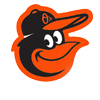
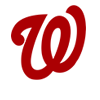

-1745819772711.png)

